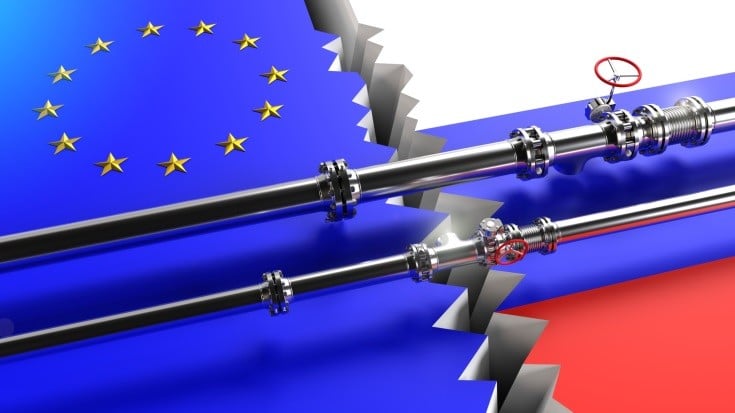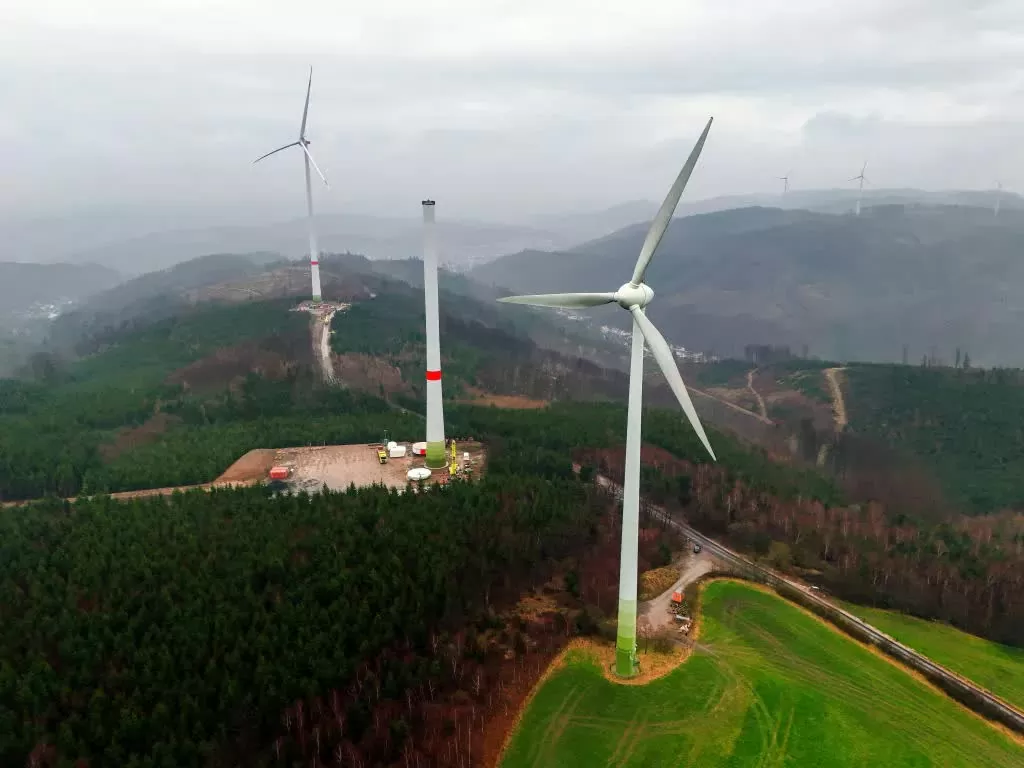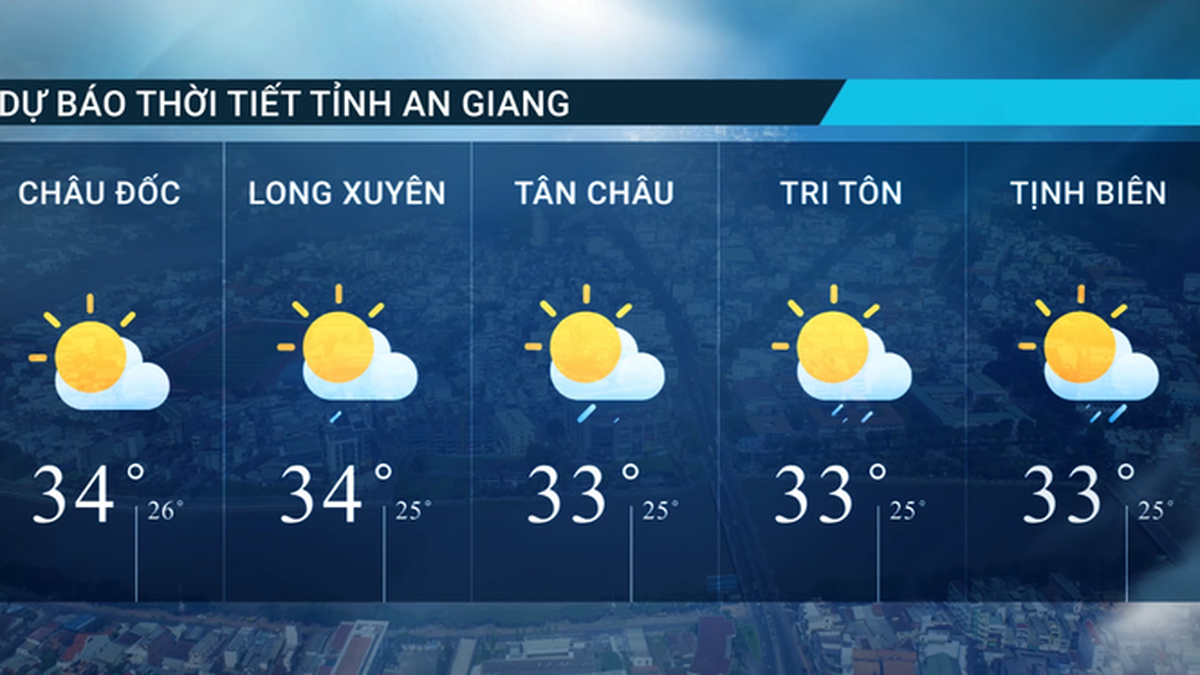Over the past three years, Europe has accelerated its move away from Russian energy, yet Moscow remains one of the continent's most important energy suppliers. Why?
 |
| Europe has proven that, without Russia, these countries can still 'live well'. (Source: Getty Images) |
Three years ago, Russia was the world’s largest exporter of natural gas and Europe was its top customer. For the continent’s leaders, access to cheap energy outweighed any concerns about doing business with President Vladimir Putin.
Then, in February 2022, Russia launched a special military operation in Ukraine. Europe's over-reliance on Russia - as its sole supplier - has left it reeling.
At that time, Moscow also faced a "shower" of sanctions from the West, while Europe actively sought alternative gas supplies, gradually abandoning this item of the Kremlin.
Europe is paying more
Europe has proven that it can survive without Russia. Many importers of gas, oil and coal, which used to be Russia's "regular customers", have abandoned the country and switched to alternative sources.
In Europe, consumers are also looking to use less energy, reducing demand. Ultimately, the lights are still on in European countries and most factories continue to operate at full capacity.
However, things are not that simple!
Europe is paying more for gas and oil and some of its more energy-hungry industries are struggling to stay globally competitive.
And the surprise: Russia remains one of the continent's most important energy suppliers. Why?
More than half a century ago, the Soviet Union needed money and equipment to develop huge newly discovered gas fields in Siberia. West Germany was on the hunt for cheap energy to support its rapidly growing manufacturing sector.
In 1970, the Soviet Union and West Germany signed a gas pipeline agreement, in which German plants provided thousands of kilometers of pipeline to transport Russian gas to Western Europe.
That energy flow grew steadily over the following decades until Berlin found itself buying more than half of its gas from Moscow, along with about a third of its total oil.
Germany and other European countries have been shifting to wind and solar power in recent years. But Russian pipeline gas remains a convenient, affordable option.
 |
| A wind farm near Hagen, western Germany. (Source: AFP) |
According to the Bruegel research organization in Brussels, in 2023, Russian fossil fuel imports into the European Union (EU) will reach about $1 billion/month, down from a high of $16 billion/month in 2022.
Most of the remaining imports are natural gas.
According to data from the European Commission, Moscow will still account for 15% of the 27-member bloc’s total gas imports in 2023, behind Norway and the United States at 30% and 19%, respectively. Most of Russia’s gas is transported via pipelines through Ukraine and Türkiye.
Among the biggest buyers are Austria, Slovakia and Hungary - countries with economies heavily dependent on fuel.
Major energy consumers including Spain, France, Belgium and the Netherlands are also still importing Russian liquefied natural gas (LNG).
Some businesses are still "tied" to Russian gas
Russia's European customers are often tied to long-term, rigid contracts.
Besides, switching and finding alternative suppliers to Moscow could be costly as available supplies on the global gas market are expected to remain tight for at least another year.
Major customers – including Slovakia and Hungary – say they are looking for alternative sources. But these landlocked countries will have to pay more if they buy non-Russian gas.
These countries import gas from Moscow via Kiev, under the only remaining commercial contract between the two conflict-torn countries. The contract expires at the end of this year and Ukraine has said it will not renew it.
Major companies from Slovakia and Hungary are pushing for a deal that would allow gas transit through Ukraine to continue into 2025. The talks have been going on for months but have yet to yield any results.
Currently, there is no ban on Russian gas across Europe, although some countries such as the UK, Germany and the Baltic states have decided to stop importing this fuel.
Some of Gazprom's biggest and oldest customers, such as Germany's Uniper SE and Austrian energy company OMV AG, have terminated contracts.
Other major European corporations still have long-standing investments in Moscow energy that they are reluctant to give up.
Specifically, France's TotalEnergies SE remains a shareholder in the giant Yamal LNG project in Russia's Arctic. Spain's Natorgy Energy Group SA has a 20-year contract to buy liquefied fuel from Yamal until 2038.
Russian oil "flat" to Europe
On the oil front, the EU still imports Russian crude via pipeline and road transport. The 27-member bloc’s ban only applies to shipping.
There is still no ban on oil products produced at refineries outside Europe that use Moscow oil, such as in Türkiye.
Sales from these refineries to the EU would have brought Russia an estimated €1.1 billion ($1.2 billion) in tax revenue by 2023, according to Global Witness.
Experts believe that it is possible that Russian crude oil has found its way to Europe through intermediaries.
Tracking Russian crude and LNG has become more difficult since Moscow deployed a large “shadow fleet” of tankers to avoid the impact of international sanctions.
Renewable energy - the direction of Europe
Russia will account for less than 10% of Europe's gas consumption in 2023, down from more than a third before 2022.
Norway has replaced Russia as the continent’s largest supplier of pipeline gas, thanks in part to new facilities built in Europe to transport LNG from alternative exporting countries. Meanwhile, the United States has become Europe’s top LNG supplier.
Europe is also consuming less fossil fuels. Some energy-intensive industries are struggling with rising energy bills, forcing them to cut production or switch to making less energy-intensive goods.
In addition, Europe is also increasing the use of renewable energy.
The 2022 crisis has made European governments more determined to accelerate the adoption of clean energy.
As a result, electricity production from gas and coal has plummeted. According to UBS Group AG, European gas demand in the first eight months of this year was 20% lower than the same period in 2021, before the energy crisis.
Renewable energy also helps Europe move closer to its goal of completely eliminating Russian energy by 2027, including oil, gas and coal.
Source: https://baoquocte.vn/dieu-bat-ngo-cua-nga-va-chau-au-co-lien-quan-den-khi-dot-huong-di-moi-co-the-giup-eu-hoan-toan-cach-nang-luong-moscow-297904.html

































































































Comment (0)